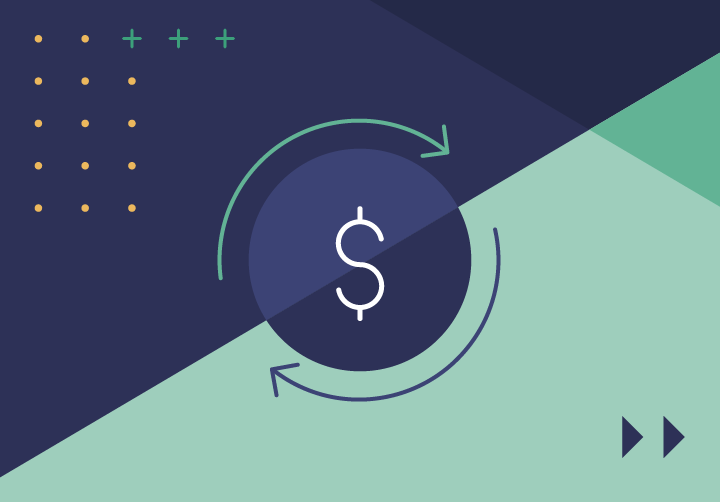The 3 stages of creating sustainable revenue streams

Long gone are the days of single revenue stream business models. From physical products to software companies, subscription offerings bring convenience to businesses and consumers.
But how do you even get started on creating a sustainable revenue stream? It requires two things: A powerful recurring revenue engine and relationships that drive engagement and loyalty. Both are key to surviving during challenging economic times.
We sat down with Robbie Kellerman Baxter, a leading expert on subscription pricing and membership models and the author of The Membership Economy and The Forever Transaction, for a Subscription Session called Expert Tactics & Strategies for Creating a Forever Revenue Stream.
In this Subscription Session, we discussed how to:
Successfully launch a new recurring revenue stream, even in times of uncertainty
Scale and deliver sustainable, long-term revenue without cutting corners
Be agile to continuously deliver value and consistent, predictable revenue
Optimize for engagement, the leading indicator for retention, and how to win back subscribers after cancellation
Let’s review the three main stages to achieve a forever revenue stream and the proven tactics that guarantee success.
Stage 1: Launching a subscription model
If you have competitors and are depending on relationships and building trust with your customer base, a subscription model may be for you.
The benefits of a subscription model can include being able to sell directly to your end customer, getting a 5-7x valuation versus a traditional business, and getting dependable recurring revenue that comes from a subscription model.
When designing your subscription strategy, consider the following:
What are the necessary resources? Enlist all the people, money, and resoruces the project will entail. Then, set expectations with stakeholders and build support.
What is the value proposition? Define a “forever promise” that appeals to your customer needs–make this big and compelling enough. Ensure it delivers value and is a differentiator from your competitors.
Who’s your Ideal Customer Profile (ICP)? Define how your ideal subscriber would be, think about their goals, and use that to define the journey they’ll go through to achieve them.
Stage 2: Scaling your subscription business
You've launched your subscription business and it’s working. You have a new source of revenue, and your customers are happy to pay a subscription fee that gives them a valuable product.
What’s next? Expanding and scaling–and it all starts within your company. Here’s where to begin:
Transform your business culture: You and all your teams should work towards a customer-centric approach.
Build the right infrastructure: What are the processes that the organization needs to invest in to support it? What tech stack do you need?
Continually evolve your offering: Customer expectations and demands are constantly evolving, and you have to keep up.
Consider the occasional acquisition: Would you benefit from acquiring a company that is already doing subscriptions versus building from scratch?
In this stage, you'll also likely be focusing on customer acquisition. So how do you optimize customer acquisition? Kellerman Baxter advises that there needs to be a balance between acquisition and retention.
Don’t crank up acquisition until you know retention works. Track your acquisition efforts by customer segments and compare them. Ensure you look at your customer acquisition costs and track customer lifetime value and the expected lifetime of a customer.
Metrics like churn, monthly recurring revenue, annual revenue, feature use and adoption, and engagement amongst others are all very important to keep track of, as they provide valuable insights and offer a clear understanding of its performance, helping you make informed decisions.
Monitoring acquisition, revenue, and retention is key to success. Want to learn more about what you should track? Here's a compelling list of 10 metrics for subscription businesses, their formula, and how to calculate them.
Stage 3: Becoming an industry leader
This stage is about taking the lead and not resting on your laurels or falling behind the competition or new players in the space.
As subscriber preferences change, businesses that can promptly meet their demands and expectations are the ones who are set apart from competitors. Here’s what to consider:
Stay relevant: Make sure tomorrow’s subscribers find as much value as today’s (keep pace with the promise you set in the first stage).
Inoculate yourself from subscription fatigue: Continually provide value to subscribers to mitigate churn.
Keep a global perspective: Should you focus on new markets and new currencies? How do you expand globally?
Use your microscope and telescope: Zoom in on what’s happening now, but zoom out to stay ahead of what’s going to happen in the future.
Make your revenue stream disruption-proof
While there are different types of revenue models, the subscription-based model continues to thrive in a dynamic market where convenience and value are crucial. Companies that have moved away from transaction-based revenue and expanded their revenue source to include recurring offers see success in predictable, steady revenue.
Regardless of the maturity of your subscription business—whether you’re launching, scaling, or optimizing—you are not immune or disruption-proof. But you can be.
Make the most of this opportunity to (re)evaluate how you can adapt your business to meet consumer needs now and moving forward. Being proactive is the key to driving engagement at every stage to increase loyalty and reduce churn.
Watch the full Subscription Session here.

